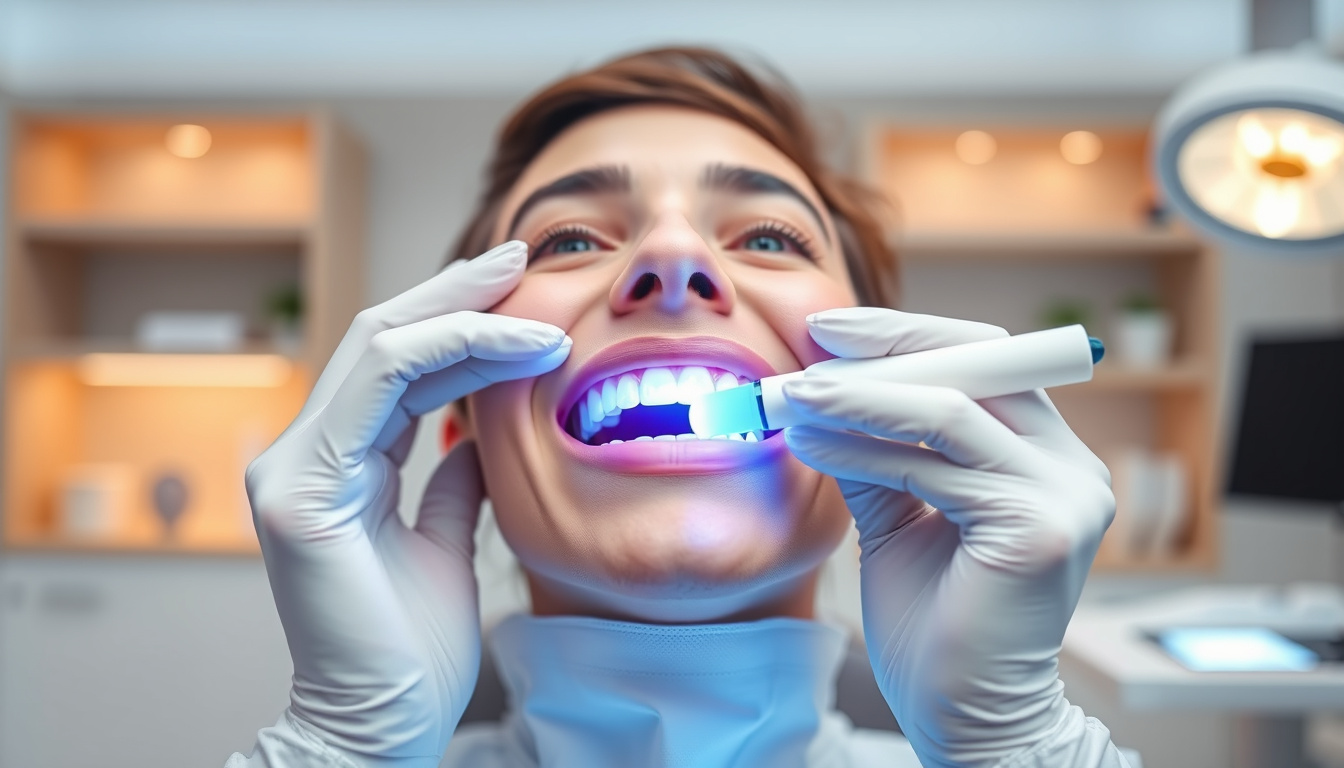Whitening teeth brightens smiles and boosts confidence. Many people with sensitive teeth feel pain with standard treatments. Here, desensitizing teeth whitening methods work to keep teeth safe. They help shield sensitive teeth during and after the process. In this article, we list ways to cut pain and share tips for a bright, calm smile.
Understanding Tooth Sensitivity and Whitening
Tooth sensitivity shows up when enamel thins or gums pull back. This loss exposes dentin and nerves. Whitening gels have peroxide that seeps through enamel and touches dentin. This touch can bring short bursts of pain.
Desensitizing teeth whitening cuts the pain with chosen formulas. They guard enamel and calm nerves during whitening. Knowing these ways helps you pick a gentle plan for your smile.
Common Causes of Sensitivity During Whitening
Know the causes of pain when you whiten:
- High peroxide in gels
- Too long or too often use
- Thin enamel or receding gums
- Lack of care after whitening
Fixing these points with gentler plans makes the whole process more calm.
Effective Desensitizing Teeth Whitening Methods
1. Use Desensitizing Toothpaste Before Whitening
Start with a desensitizing toothpaste that has potassium nitrate or stannous fluoride. This paste blocks nerve signals and cuts sensitivity. Use it for two weeks before whitening. It helps keep enamel strong and gets teeth ready for a soft whitening.
2. Professional Whitening with Protective Agents
Dentists mix whitening solutions with agents like fluoride varnish or calcium phosphate. They clean stains while guarding enamel and easing nerve pain. A dentist works with you to keep the process gentle.
3. Lower Concentration Whitening Gels
Pick gels with less peroxide (about 6%–10%). This low dose makes pain less likely. The treatment might take longer but suits those with sensitive teeth who need a softer touch.
4. Apply Desensitizing Gel Right After Whitening
After whitening, apply a desensitizing gel. The gel soothes pain and closes the small channels that let pain signals flow. It usually has fluoride and potassium nitrate to calm the nerves.
[h2]5. Avoid Frequent Whitening Sessions[/h2]
Space out whitening sessions so enamel gets time to mend. Too many treatments weaken enamel and bring more pain. Stick to your dentist’s timeline.
Additional Tips to Minimize Sensitivity While Whitening
- Use a soft-bristled toothbrush and brush with care.
- Skip very hot, very cold, and acidic foods after whitening.
- Rinse daily with a fluoride mouthwash to keep enamel strong.
- Keep up good oral care to avoid gum issues that expose sensitive spots.
- Ask your dentist before you start any whitening routine.
Quick Overview: Desensitizing Teeth Whitening Best Practices
- Use a desensitizing toothpaste for two weeks before.
- Pick dentist treatments that mix in protective agents.
- Choose whitening gels with low peroxide.
- Apply a desensitizing gel right after whitening.
- Give enamel time to heal between sessions.
Why Choose Professional Desensitizing Whitening?
Dentist treatments bring many gains over home kits. A dentist adjusts the plan to fit your sensitivity. They watch your enamel and place protective agents right where needed. Research from the American Dental Association says dentist care is safer and works better for sensitive teeth.

FAQ About Desensitizing Teeth Whitening
Q1: Can over-the-counter whitening kits be used safely with sensitive teeth?
A1: Some kits are made for sensitive teeth. They use lower peroxide and mix in gentle agents. Still, it is wise to ask a dentist to keep pain low.
Q2: How long do the effects of desensitizing treatments last during whitening?
A2: The relief lasts through the treatment and for a short time after. Regular use of a gentle toothpaste and gel can keep the effect going.
Q3: Is whitening safe for people with chronic tooth sensitivity?
A3: With care and dentist checks, whitening is safe. Those who feel pain often should see a dentist to set a plan that fits them.
Final Thoughts: Brighten Your Smile Comfortably
If you have sensitive teeth but want a bright smile, desensitizing teeth whitening is a kind plan. Start with a gentle toothpaste, choose care from a dentist, and follow aftercare tips. This plan helps you whiten your teeth with less pain. Do not let sensitivity hold you back—use these smart methods and enjoy your bright smile.
Ready to get a bright smile without pain? Talk with your dentist for a plan that fits you. Your calm, bright smile is near!




